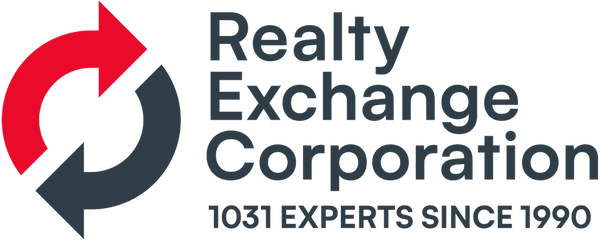What you need to know about a 1031 Exchange
The main benefit of carrying out a 1031 exchange rather than simply selling one property and buying another is the tax deferral. A 1031 exchange allows you to defer capital gains tax, thus freeing more capital for investment in the replacement property. Below you will find the basic information about a 1031 exchange.
What property qualifies?
To be a successful tax-deferred exchange, certain criteria must be met for the real estate to be like-kind.
Like-kind property is defined according to its nature or characteristics, not its quality or grade. This means that there is a broad range of exchangeable real properties. Vacant land can be exchanged for a commercial building, for example, or industrial property can be exchanged for residential.
But you can’t exchange real estate for artwork, for example, since that does not meet the definition of like-kind. The property must be held for investment, not resale or personal use. This usually implies a minimum of two years’ ownership.Basically, these are:
- Both properties must be in the United States.
- The Relinquished Property currently must be used by the exchanger for investment, business, rental or production of income.
- The exchanger must hold the new Replacement Property for investment, business, rental or production of income.
- The Replacement Property must be identified within 45 days.
- The Replacement Property must be received within 180 days (or the federal tax due date, including extension, if earlier).
Properties that qualify:
Commercial Property
Rental Property
Farm Land
Apartment Buildings
Delaware Statutory Trusts (DST)
Properties that do not qualify:
Principal Residences
Principal Residences do not qualify. Nor does a property to be immediately converted to a principal residence qualify as a like-kind replacement property. However, a property that includes both a principal residence and business property may be sold and the appropriate value assigned to the business portion. A good example is a farm property that includes both a principal residence and a working farm investment property.
Second Homes
Dealer Property
Partnership Interests
Reverse Starker Exchanges
A reverse exchange is a type of exchange for investors who wish to acquire a replacement property before they settle on their relinquished property.
Related Party Property
Vacation Rentals
Identification and Time Limits:
From the day after you close on your relinquished property, you have 45 days to identify replacement properties. This identification must be in writing, signed, and be unambiguous. There are multiple rules that you can use to identify properties, the rule that most exchangers use is the three property rule: You can identify up to three properties of any value and buy any or all of them. Once you have identified, you have committed to purchase those properties, we must either buy those properties on your behalf or hold your funds up to the 180 day time limit.
From the day after closing you have 180 days to settle on a replacement property that you have identified. If you do not close on a property or use all of the funds by that time limit, we will return any funds still in the escrow account and you will owe taxes on any funds that were not used up to your total gain on the property you sold.
How much tax will I have to pay if I do not do an exchange?
How much do I have to reinvest?
One of the primary objectives of a tax-deferred exchange is to defer paying any tax on the gain realized when you sell the relinquished property.
For an exchange to be totally tax free- that is, for all the gain to be deferred-the reinvestment in the replacement property or properties must meet all the following rules:
- Rule 1: The replacement property must have an equal or greater acquisition
cost than the adjusted sale price for the relinquished property. - Rule 2: The exchanger may not receive cash – all the proceeds in the qualified escrow account must be reinvested.
- Rule 3: The new or assumed mortgage total should be equal to or greater than the debt paid off on the relinquished property, or the Exchanger must add new cash to offset the difference.
- Rule 4: Taxpayer may not receive non-like property — including owner held notes, cash or personal property.
The following example shows the reinvestment requirements for the gain to be totally tax-deferred.
| Contract Sales Price | $180,000 |
| Less: Selling Expenses | -$15,000 |
| Equals: Adjusted Sales Price | $165,000 |
| Less: Balance Due on Loans | -$65,000 |
| Equals: Cash Proceeds (exchange escrow funds) | $100,000 |
To be totally tax free and to defer all of the gain, the following requirements must be met:
- The replacement property or properties must total an acquisition cost of at least $165,000;
- All of the $100,000 in cash proceeds must be reinvested (down payment);
and - New or assumed mortgages must be at least $65,000.
NOTE: The exchanger must add or substitute new cash to reach that amount.
The acquisition cost is the contract price plus the acquisition expenses which are part of the cost to acquire the property. Normally these are shown on the settlement statement. The acquisition expenses do not include prepaid items, such as real estate taxes and hazard insurance, or expenses associated with obtaining financing,such as points.
Partial Tax Free Exchange
It is possible that the situation will arise when the exchanger wants to receive or ends up receiving BOOT, which is taxable income. There are three basic sources of boot, which are:
- Cash Boot: Cash proceeds received at settlement or at the end of the exchange process are taxable income up to the amount of the total realized gain.
- Mortgage Boot: Mortgage relief (the mortgages on the replacement properties are less than the total mortgages on the relinquished properties) also becomes boot and taxable income.
NOTE:New cash can offset mortgage boot. - Non-Like Property Boot: If the exchanger were to receive non-like property in the transaction, such as an automobile, it is considered as taxable income at market value.
More common is when the exchanger takes back financing on the relinquished property. The value of the note received is considered boot and is taxable gain. With proper planning the note will be treated as an installment sale and will be taxed as the gain is received over the term of the loan (contact us to discuss how a note taken back on the relinquished property may be handled to reduce taxable income).
Buying Down:
It the exchanger decides to buy down, that is to purchase a replacement property that has an acquisition cost less than the adjusted sale price of the relinquished property, the exchanger will have some taxable income.
If the the relinquished property had an adjusted sale price of $165,000 and the taxpayer purchased a replacement property that cost $150,000, there will be $15,000 of recognized capital gain.
Tax on Boot:
How will the $15,000 of capital gain be taxed? Unfortunately any gain recognized in an exchange will be first taxed at the 25% federal rate until all the Section 1250 depreciation taken has been recaptured.




